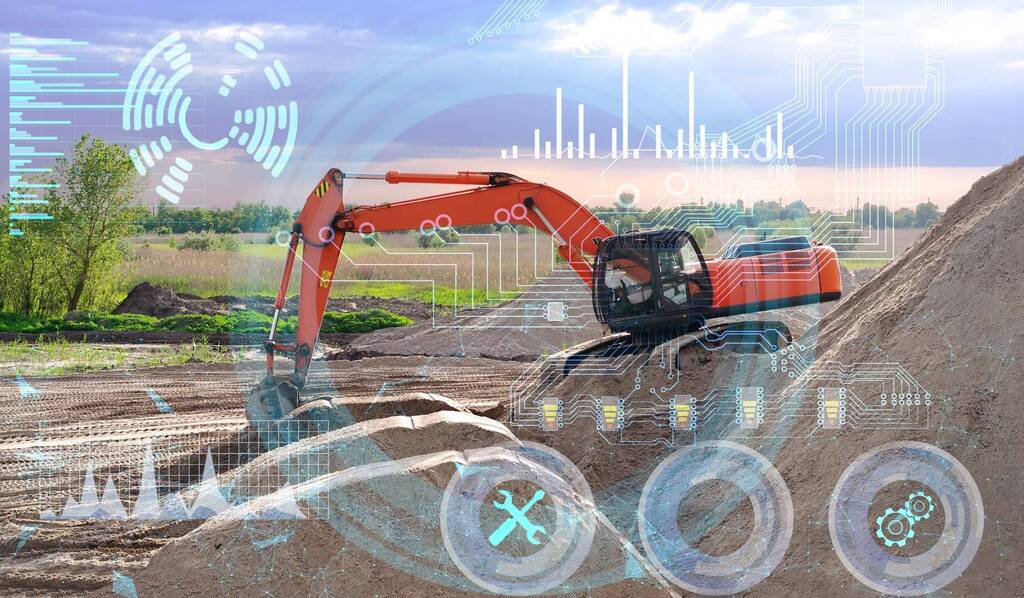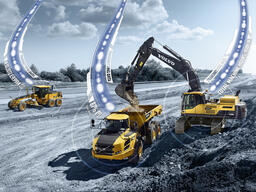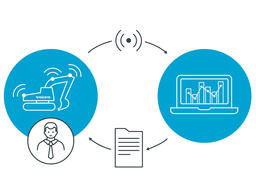
May 17, 2023
Connectivity in the pipeline: where we are.
#digital transformation #Italy@bauma #construction site #connectivity #5GConnected vehicles on construction sites is a preliminary condition for the automation of construction machinery and equipment in the coming years.
Connectivity is an irreversible progressing process; this is a fact. The entire construction industry is becoming increasingly digital and connected like other industrial sectors, even if slightly behind them.
Proof of this is that in many trade fairs, bauma above all, the trends of advanced digitization and technological innovation for machines, equipment and solutions are increasingly central in terms of themes and innovations proposed by the main brands. And it could not be different given that electronics, software and connection technologies have become an integral part of the construction equipment at the same level as traditional components.
If connectivity and digitization have been part of the process of implementing the functions and management of the machines, phase 2
is coming. Designers and developers are aimed at reaching a greater automation of machinery in the medium term.
In brief, the next generation of construction sites aims at a human phase dedicated to the management and setting of machinery that should be able to work in total autonomy, without any operator in the cabin. And what seems like science fiction is receiving instead a boost from the progress made in the direction of connectivity between machines and the management of data that represent the basis of a hyperconnected, predictive and robotized future construction site.
The new generation of connected construction site.

What is the basis of a second-generation connectivity in construction sites?
The latest technological releases such as the extension and improvement of digital connectivity driven by technologies such as 5G, LEO (low earth orbit) satellites, optical fiber is having a strong impact on the construction ecosystem. It is an epochal turning point if we consider that until a few years ago the construction site was a remote site, with no signal coverage. From a poorly served if not isolated place to a site sufficiently connected and capable of conveying data and information useful for efficiency and decision-making processes. In the construction site it is now possible to monitor the position and use of the machines in real time, as well as diagnostic and performance information. An indispensable support for improving fleet management, reducing fuel consumption, increasing safety, improving planning of control and maintenance. Companies can benefit the most from the advantages of a connected construction site. The good news in this is not the technologies used to monitoring of machine’s performance but its interaction and synergy thanks to connectivity.
Constant data flow
A connected construction site is a tight network of digital information sent and received instantly between the operations’ center, machines and equipment still activated and managed by humans, materials and projects. The physical operations center, based on a platform or on a cloud, makes the site information usable anywhere at any time.The flow is that of data and information to support decision-making processes relating to a variety of areas, from the planning of processes to personnel management, from the purchase of materials to the organization and management of machines and equipment.
Is Artificial Intelligence coming in construction sites?
What until a few years ago could have been the subject of an Asimov novel is actually medium-term technological evolution. The next step in construction sites evolution is the implementation of artificial intelligence, which finds fertile ground thanks to advanced connectivity.
The machine-cloud data flow allows the analysis by the AI of all the operating parameters for example and, on this basis, the management of all the automated functions that exist and will come on board of the machine, as well as the implementation of new features.
The predictive logistics in the construction site
This way optimizing the efficiency and organization of the entire construction site is possible. From real-time check of work progress to the automation of repetitive and low-tech operations (management of a concrete production cycle) such as stock’s survey and warehouse or fuel levels of machinery for predictive refueling, or personnel management. This will improve the general operational flows of the construction site and reduce the interruption of work activities.
Not a few constructions sies’ processes already exploit functions in terms of connectivity and digital functions. But the world of earthmoving machines and equipment is now entering a phase of interoperability in which the management of the single machine will be redefined into machine management in the construction site unit, and, thanks to AI, the communication will expands further, touching various digital platforms and organizational systems, including those outside the construction site. Regardless to the current evolution of the construction world in terms of digitization and automation, we don’t know how much time is left for its total conversion. Once the transition process has been triggered, as for other industrial sectors, adaptation to the new standards is definetly faster, if not immediate.





